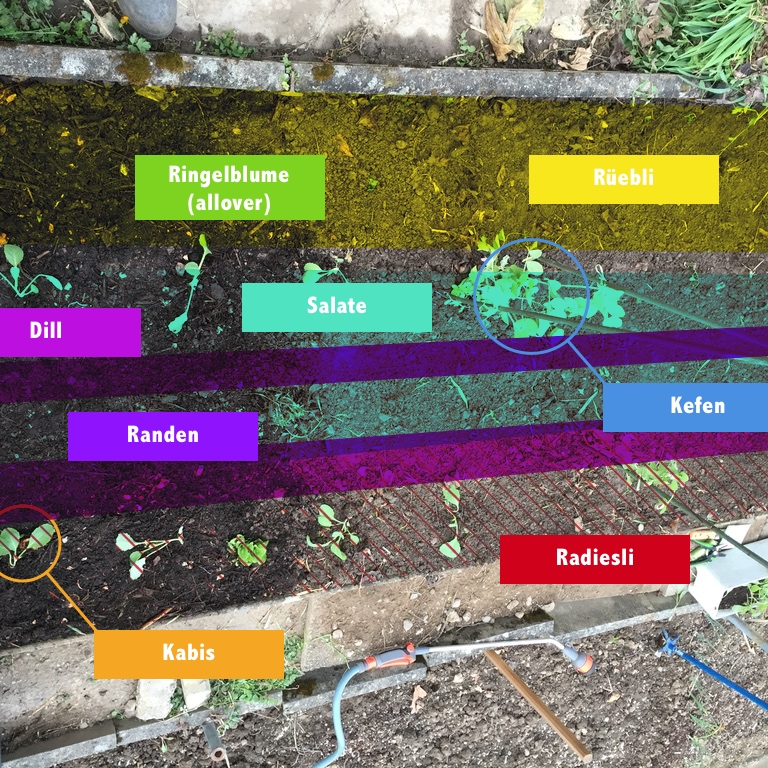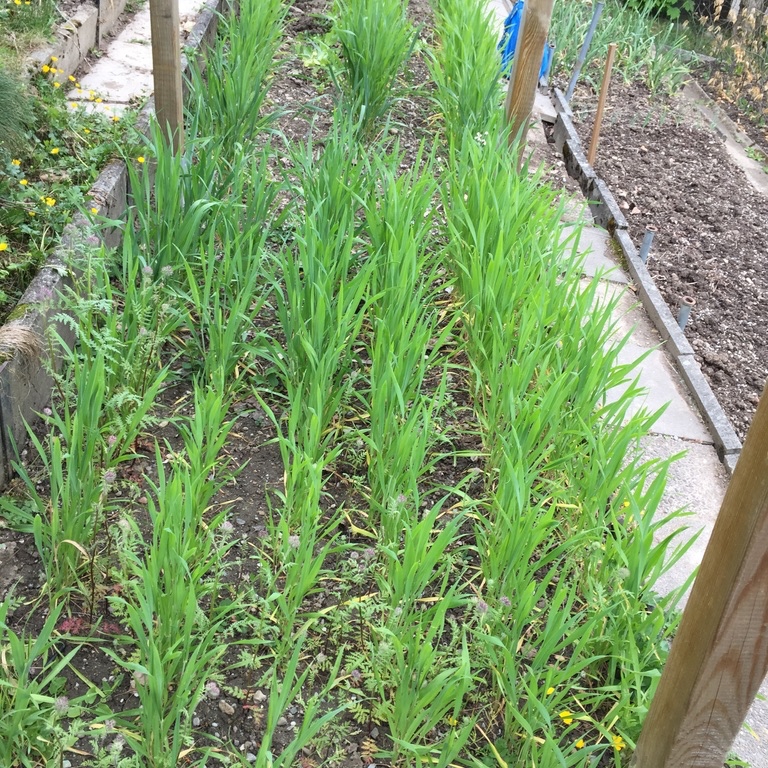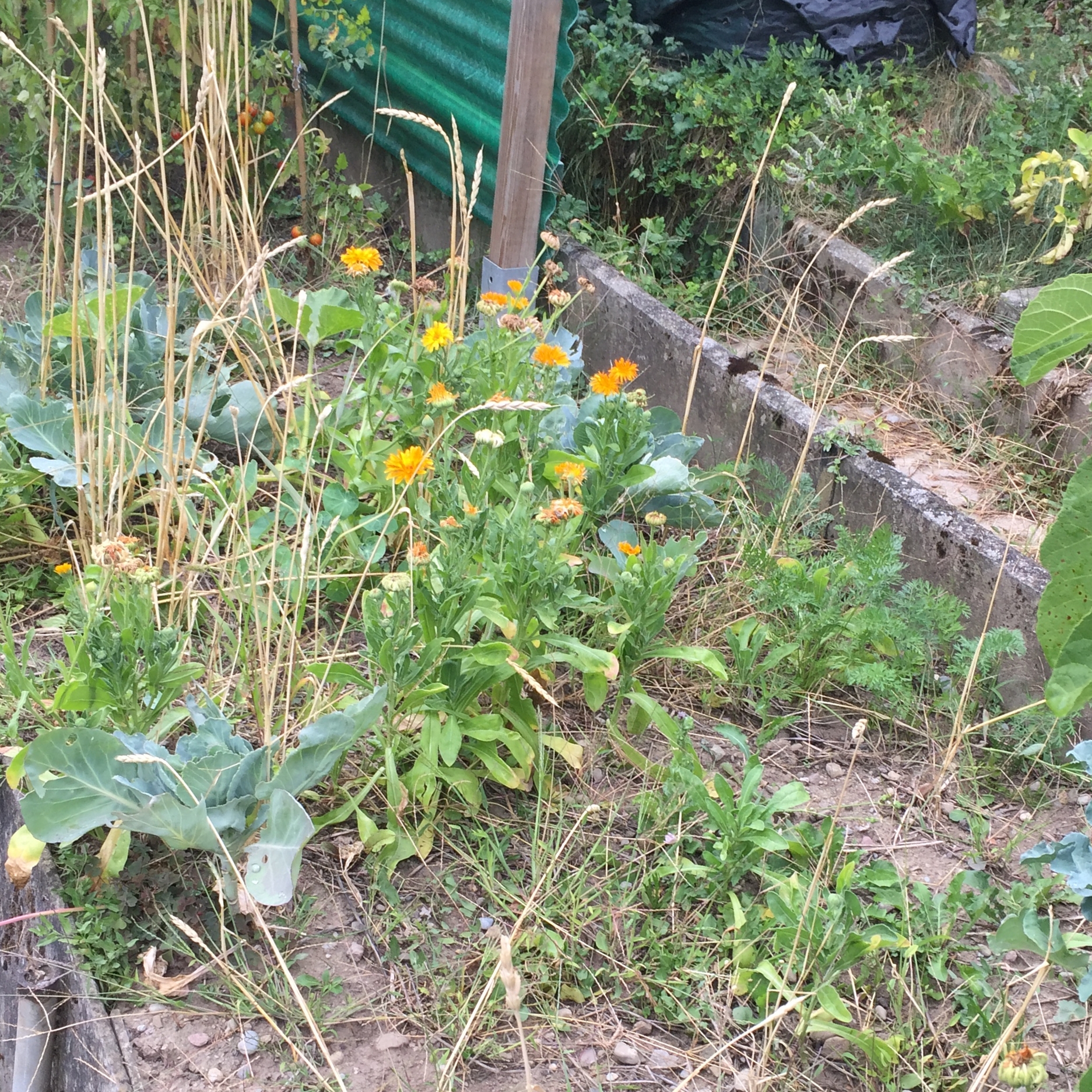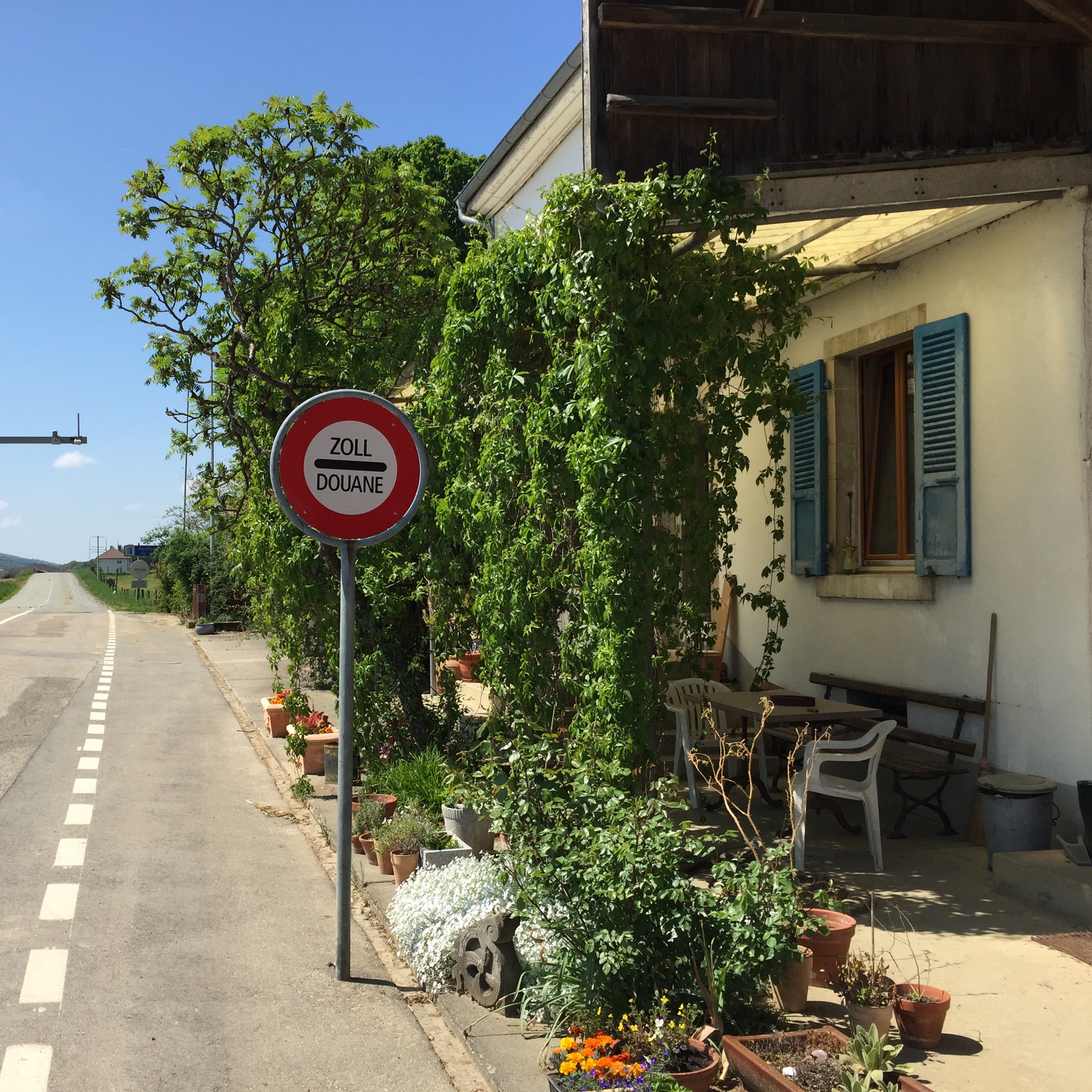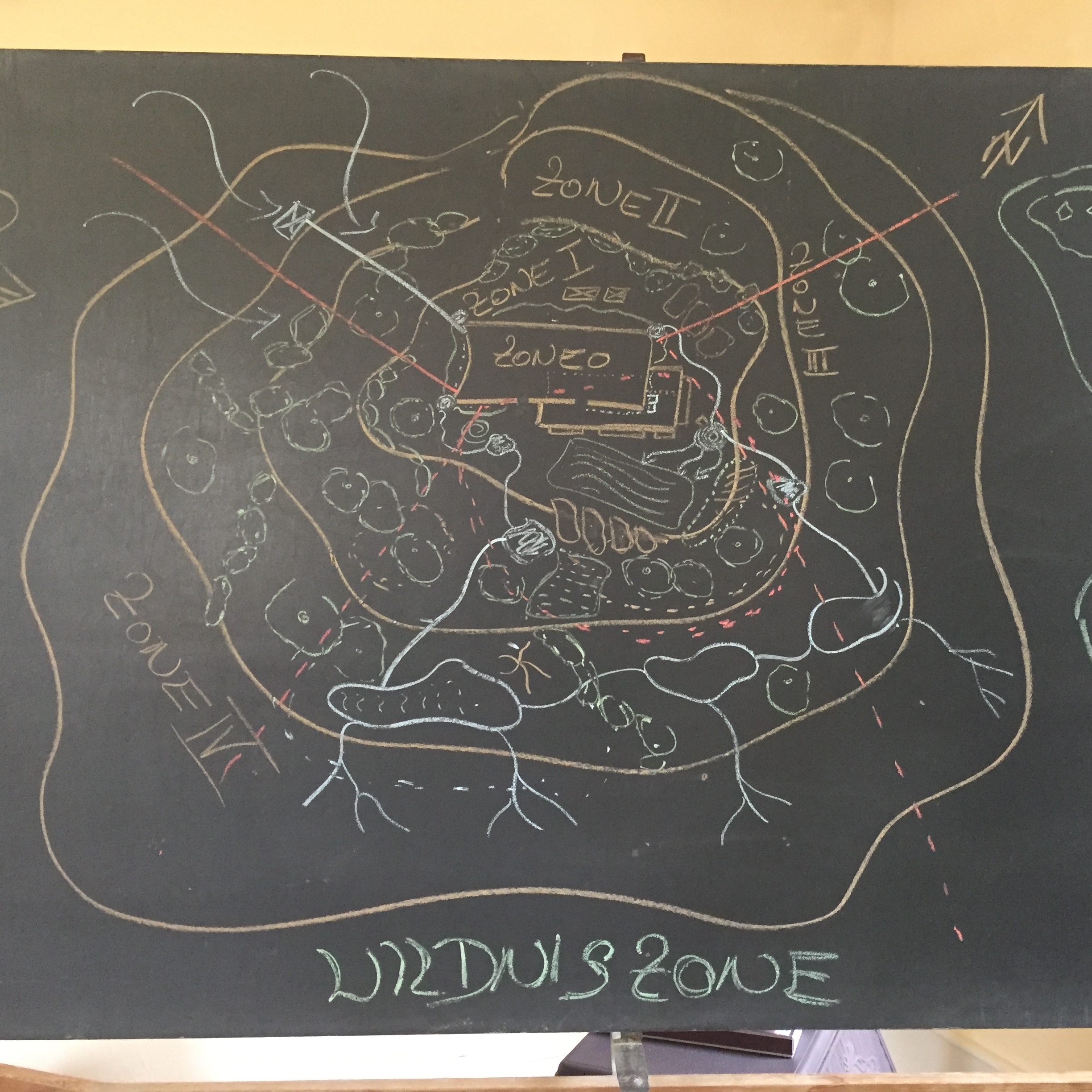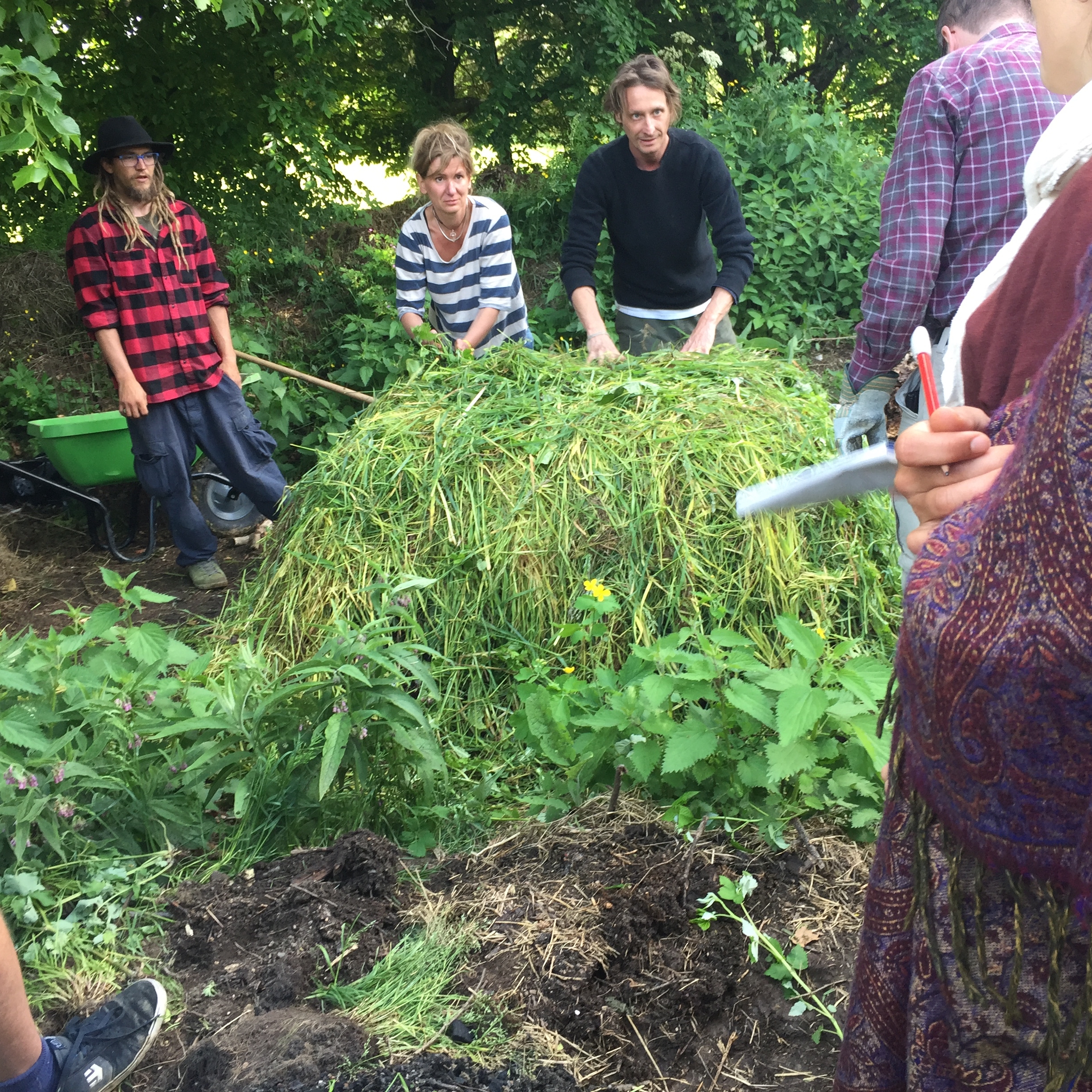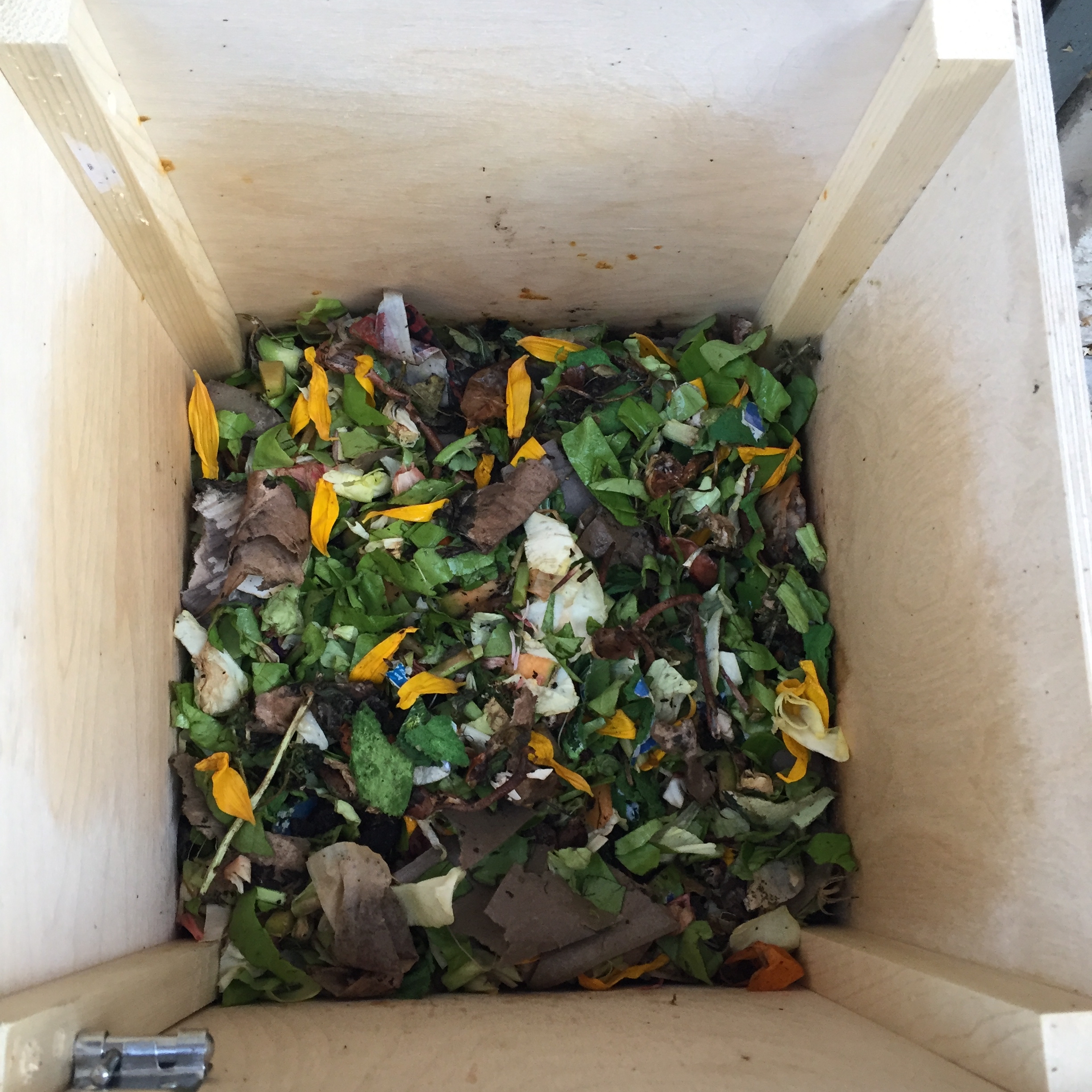Yeah, I’ve gotten lazy again. Or rather: I am lazy. Or even more precise: I’m doing plenty of things, but I’m lazy when it comes to tackling the ones that take the extra effort, to break out of the flow, to sit down, breath, switch on your senses – and create. But here we go again with the rambling. It’s not all that bad: An Update. With Pictures!
«My» «Garden»
I’ve mentioned it before, I’ve been wanting to apply what I’m learning by myself, on my own. The only playing field I’ve been able to lay my hands on, is a little plot with a great view above Zurich. I’m really grateful for the opportunity my brother Jakob gave me to just play and try – despite the skeptical looks and frowns of his family-garden-neigbors!
So I’ve had like 3 iterations of throwing out seeds and seeing what could come of it.
The first round was late last year. I neatly laid out rows of winter spelt and intersected them with circles of sugar peas and sprinkled the whole area with seeds of phacelia and arugula. While the phacelia and peas happily poked out their heads before winter and triggered hopeful anticipation, the rest did a no-show. I’ve tried to apply the practice of mulching by collecting some leaves from the trees nearby. In retrospect, I think that the warming, sheltering effect was overdone and I rather suffocated the soil/sprouts. In any case, come spring, it was all reversed: peas and phacelia all gone (maybe a collaboration of slugs and frost) but out poked the spelt. By May there was so much green material, that I chopped it off and used it as mulch again.
The second iteration, loosely based on the Polyculture compilations that I’ve read about in Toby Hemenway’s “Gaia’s Garden”, was the attempt to plant a rich, wild vegetable bed. Out of that array of seeds and seedlings, I was able to harvest a few radishes, 1 (one) dill, aaand… well, the carrots are still growing and there is hope for some cabbage. The calendula and nasturtium are happy too, but no sign of lettuce and also the broccoli and beets proofed to big of a challenge. Again, the mulching in combination with the poor soil and rain showed to be rather proliferating the slugs and not my plants.
The 3rd iteration was the attempt to fill holes and cover ground after pulling out the plants that I didn’t want (I first mistook them as a successful result of creating a lush food bed). But the time of sowing co-incided with a long period of heat. And I wasn’t there to water those babes. So some of the arugula poked out but was consequently torched. The rest never even made an appearance. The vision was beautiful: A ground covered with spinach, some kale growing in the foreground, while in the back, beans wind their way up around sunflower stems… So in the end, I have a lot of things growing, that I didn’t plant (among them a beautiful pumpkin!) but not much yield yet.
Clearly, this plot and my work is not Permaculture – it’s not even proper gardening. And to do polyculture and let the garden take care of itself, it needs a much healthier soil. So for the next iteration, which I will start soon, I’m planning to sow a mix of green manure (flax, mustard, fodder radish… as usual, all ordered at Sativa Rheinau). And maybe I’ll get some compost.
If you care, I’m using Evernote to keep my garden diary. Pretty handy.
Permaculture Design Course
In May, I’ve spent 10 days right next to the French border in a former custom house, smuggler’s den and feminist center to learn more about Permaculture. Together with 22 other seekers, a wild mix of extremely inspiring people, ranging from the young dental technician to the retired carpenter, from the geologist to the spiritual teacher, I was listening to the words of Marcus Pan. Lounged on pillows or propped up on sheep furs, we’ve learned about all aspects of growing gardens – vertical, horizontal, in water, in altitude, in heat and frost; about water, wind, sun and energy; about humans, birds, bees and beetles. Set in the beautiful, quiet backcountry of Jura, we found like-minded people with ideas and projects in different stages. We connected over our dissatisfaction with the state of the world today, our willingness to contribute to the change and our hope and conviction in Permaculture. Marcus, the place, good food and the late night fire or drum sessions added to the spirit, so that it was hard to part at the end of a fully packed 1.5 weeks.
One new realization that I had was, that besides the “doing” and “learning” part of Permaculture, I’m also interested in the “teaching” part. Or rather, to use a less popular word, the “consulting”. As part of the course we were developing plans for a few real-life projects. Since I didn’t bring any project of my own, I was working with other participants. To immerge into the land, empathize with the goals of the owner, apply the acquired knowledge, dream up some creative additions and combine it all into a beautiful, functioning system is a highly challenging and rewarding process. It feels like this could be right down my alley and also a more logical evolution from my current work, compared to growing the biggest pumpkins (which is still a knowledge I need to acquire as part of the process)
Worm Compost
I went into carpentry work too. Hardly. But a proud project for my skill-level. I’ve planned and built a worm-compost from scratch!
The idea behind is to not be throwing my kitchen waste into the compost bin, that is hauled away by the city, but to use it for creating my own soil. The principle seems easy: Get a box, get worms, feed them with greenery – get soil.
Said and done. I’ve got wood to be cut and assembled it according to my design. Of course I had made a blunder in my calculations, but I still made it work. I ordered worms from wormup.ch and was ready to go.
In the beginning it worked out handsomely. The little buggers were active and squirmy. It was not smelly and the 2-3 flies stayed inside the box. So for a week or two I kept the box inside my kitchen. Then I started to observe some tiny red bugs crawling on the outside – that’s when the whole zoo had to move outside my kitchen window.
Long story short and with some shame and regret: I think I might need to start over. The summer heat (it’s placed on the north-side of the house, but still) and some over-feeding by friendly helpers during my vacation turned the whole thing into a smelly, foul mass. I haven’t seen any life worms recently but plenty of beetles and flies. There is still hope for recovery but in case it’s over: I’m so sorry, little buddies!!
What’s up next?
Looking back, it appears like I’ve done quite a few things. But we’re talking about half a year and this is supposed to be my life-altering quest for a different life-style. It was merely a side project and I’ve been struggling to give it more space.
I’ve come to realize that “gardening” away from home is not my thing. I have some herbs on my window sill and started to grow an avocado from a pit. Seeing those plants every day, observing and caring… that’s where the motivation comes in. I can connect and learn. But unfortunately my land-lady has no open ear to using the backyard for my gardening mission. Apparently some predecessors spoiled her trust in gardeners for good. Sad.
So in order to push myself harder and hopefully give it more of a framework, I’ve signed up to the Permaculture Design Diploma education with the guys from Down to Earth. It will be a number of modules and projects to be planned and implemented, over the course of several years – depending on how fast I’ll go. So this is exciting, I’ll start in October – wish me luck!
